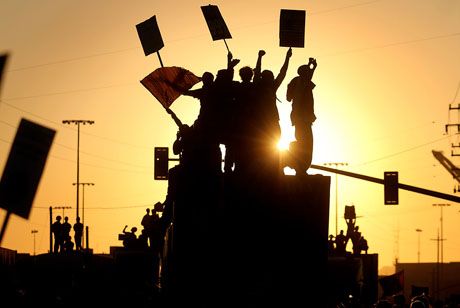Features
You are here
IWD: a history of victories and struggles

March 1, 2012
International Women’s Day takes place on March 8 all over the world. It is a day to celebrate the victories won by working-class women, and to take a pledge to continue the fight for freedom, equality and liberation.
Over a hundred years ago, in the early days of the women’s movement, the Socialist Party of America declared the first national “Women’s Day” on February 28, 1909. The date was celebrated in the United States until 1913, when women across Europe recognized “International Women’s Day” on March 8.
March 8 marks the day in 1908 on which 15,000 women working in the needle trade in New York marched to demand the right to vote and better wages. Clara Zetkin, leader of the Women’s Office for the Social Democratic Party in Germany, proposed in 1910 that women all over the world should celebrate International Women’s Day on March 8. Since then, it has been the day on which women remind the rest of the world about their legitimate demands.
Following Zetkin’s proposal, the first International Women’s Day was established in Germany, Austria, Switzerland and Denmark in 1911. In the same month, on March 25, more than 140 women workers died in the tragic “Triangle Fire” in New York. The tragedy drew attention to the exploitation and discrimination experienced by working-class women under capitalism. That same year, women also initiated the “Bread and Roses” campaign. Bread means better wages (in poor countries, it also means an end to poverty), while roses symbolize a better life. These symbols endure in women’s struggles all over the world, as both women and men carry bread and roses during IWD celebrations or during women’s struggles the rest of the year.
Throughout the last century, women have struggled for much more than just the right to vote or better wages. They have led struggles against war, occupation and all forms of oppression. All of these struggles have been about creating a better world for everyone. Today, as we mark IWD in 2012, we celebrate the hard won victories of years past, and re-commit ourselves to the struggles that continue in the years ahead.
Section:
Topics:
- Log in to post comments










